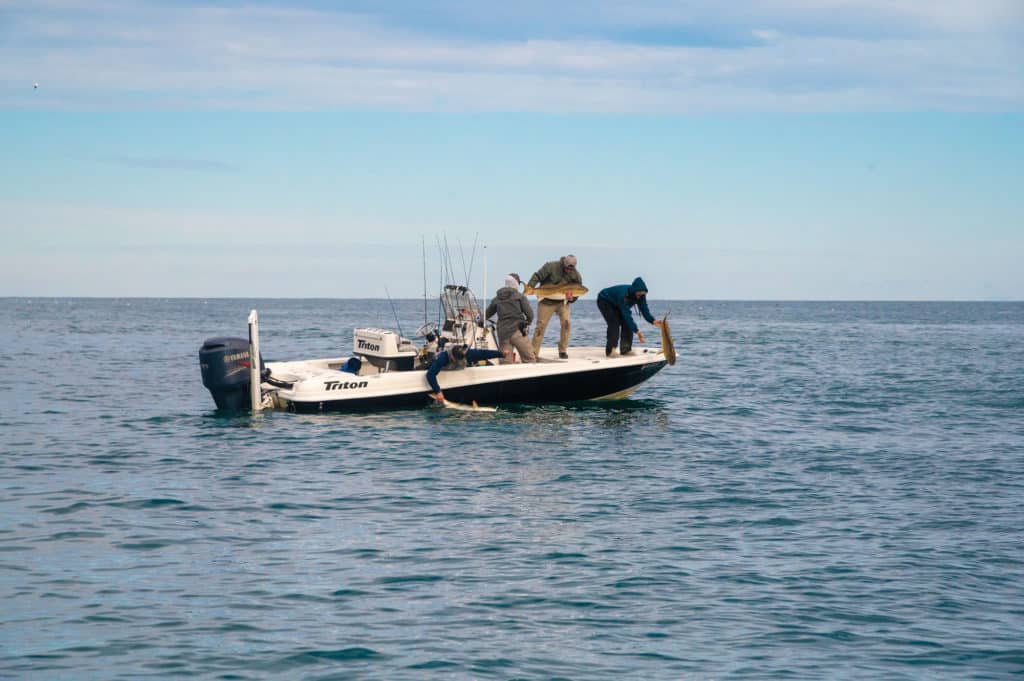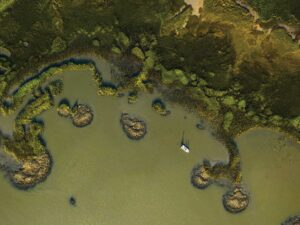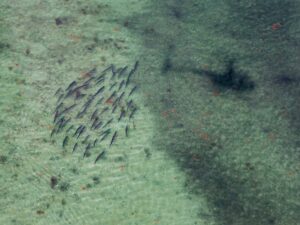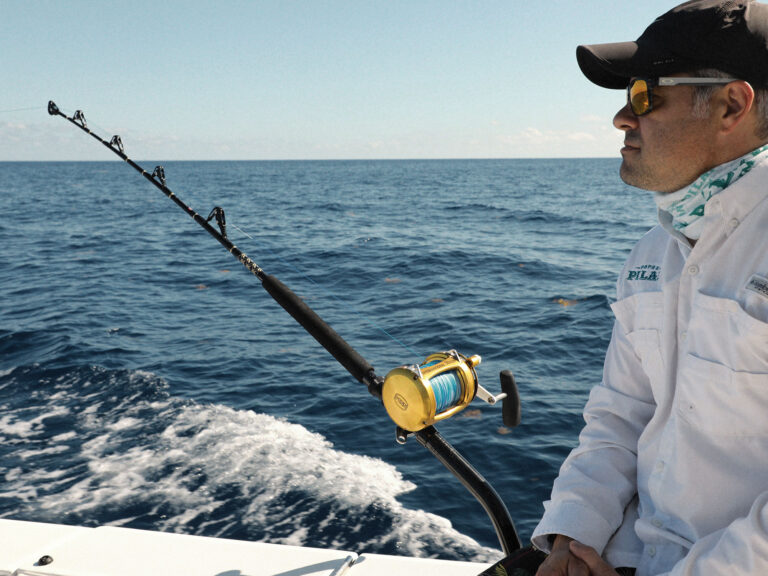
Sandwiched between Cape Hatteras to the north and Cape Fear to the south, the Cape Lookout area is served well by Morehead City and Beaufort, where many anglers launch. Access to the ocean is via Beaufort Inlet. Farther east, on Harkers Island, anglers reach the ocean through Barden Inlet under the watchful eye of the Cape Lookout Lighthouse.
Location, Location
Cape Lookout Shoals runs 10 miles almost due south into the Atlantic Ocean. To the west of the shoals is Onslow Bay, and to the east is Raleigh Bay, locally referred to as the East Side, known to produce the most consistent fishing. Although tops in promise, the area also holds a particular challenge: Significant wind whips the shoals up and stacks waves on top of what can already be a large swell. As a result, most anglers prefer to wait for a calm day to cross Cape Lookout Shoals en route to the East Side.

When winter cold fronts lower the water temperature significantly, menhaden move down from up the coast and out of the inlets, taking up residence along the beaches of Core Banks. This abundant forage draws hungry predators. Old drum, jumbo false albacore and bluefin tuna quickly move in to sample the all-you-can eat buffet.

Find Bait, Find Fish
Big redfish overwinter in the ocean around Cape Lookout. The magic water temperature for them is 60 degrees and above. It is not unusual to find sea-surface temps in the 50s one day and the upper 60s the next.
When the water is too cold, they move off the beach and hang out over live bottom. Several sites in the area provide the optimal temperatures for these fish.
Reds can be found feeding on schools of shad (the local name for menhaden) pretty much any time. In the late season, the drum do little surface feeding and are usually found around schools of shad. The downside to an abundance of shad is it spreads out the predators. You may have to fish several schools of shad before you find the right one with attendant redfish.
Be on the lookout for gannets and pelicans, which dive on schools of shad when they are in 15- to 50-foot depths. Once you locate a school, your fish finder comes into play. A school of redfish has a sonar signature much like lasagna: They swim in layers. A school of shad often forms a dome shape from the bottom. That’s a good sign.
That dome usually means they are getting eaten from below. Try bouncing a 3- to 5-ounce bucktail jig with a 6-inch twister tail off the bottom. Big reds are not the smartest fish in the ocean; they often bite any lure or fly presented to them.
Reds are not always stacked up on the East Side of Cape Lookout. Sometimes the area just west of the shoals can be excellent. Gannets and gulls are a big tipoff. It also is not unheard of to see a big bluefin tuna wallowing around in less than 20 feet of water, gorging on shad.
Old drum move up and down the beach in 15- to 50-foot depths while gulls and gannets circle the fast-moving schools. This is when side-scan sonar helps you stay with a school. The best tool is teamwork; several boats working together stay with the fish longer, maximizing opportunity.

Make Your Move
When redfish are scarce, there is plenty of promise for other species within 6 to 12 miles of the beach.
The waters around Cape Lookout are speckled with sunken ships, rock outcroppings and artificial reefs.
The closer structures—in 50 to 60 feet—hold gray trout (weakfish) and bluefish.
In late winter and early spring, it’s time to look for large bluefish.

Light jigging tackle with 10- to 15-pound braid, a short length of wire leader and 2-ounce metal jigs does the job.
In deeper water, rock piles and ledges hold gag grouper, black sea bass, triggerfish, king mackerel, red snapper and a host of other species. The same tackle used for weakfish and blues works here, though you might want to go heavier for grouper and red snapper. So step up to a conventional outfit with 30- to 50-pound braid and bucktail jigs sweetened with a strip of false albacore, cigar minnow or squid.

The Trade-Off
The variable in Cape Lookout’s exceptional fisheries is the weather, which can turn from placid to a full gale in seconds.
Keep a keen eye on the weather and be ready to react quickly when things turn nasty. Any wind over 12 knots from the north makes it tough to fish the East Side. The preferred winds are light southwest, west or northwest.
With the right intel and a little bit of patience, fishing Cape Lookout’s diverse waters provides the kind of experience you’ll remember for a lifetime.

SWS Tackle Box: Cape Lookout Trophy Red Drum
- Rods: 6- to 7-foot medium- to heavy-action spinning or conventional jigging
- Reels: Sturdy and spooled up with 20- to 30-pound braid
- Lures: Bucktail jigs (make sure you mash down the barb) with white or chartreuse heads with a soft-plastic grub or twist tails; 2-foot length of 100-pound monofilament for leader
- Fly Tackle: 11- or 12-weight rod; reel with reliable drag
- Fly Line: 600-grain sink tip
- Flies: Large Half-and-Half flies tied on 3/0 hooks in chartreuse-and-white, with large lead eyes
- Handling: Use a net to gently bring drum to the boat. Though quite hardy, these fish should be handled carefully and released quickly. Some of these fish are 50 years old.









